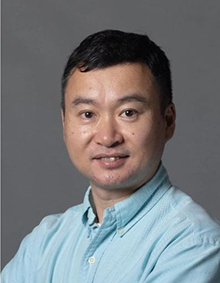17758013020 Chen Chen
-
-
-
17816169069 Jinglin Jian
-
17758013020 Chen Chen
17816169069 Jinglin Jian

Hanqing Jiang was born in 1975 in Wuyi, Hebei, Fellow of American Society of Mechanical Engineers (ASME), the 2021 recipient of the Worcester Reed Warner Medal from ASME, and the 2009 recipient of National Science Foundation (NSF) CAREER Award. Received bachelor degree in engineering mechanics from Dalian University of Technology in 1996, and doctoral degree in solid mechanics from Tsinghua University in 2001. Jiang was a postdoctoral research associate in the University of Illinois at Urbana-Champaign from 2001 to 2006. Jiang taught at Arizona State University from 2006 to 2021 (2006-2011, Assistant Professor; 2011-2016, Associate Professor; 2016-2021, Professor). Jiang joined Westlake University as Chair Professor of Mechanical Engineering in 2021 .
Curved Origami for Robotics and Active Mechanical Haptics
Hanqing Jiang1, Zhuang Zhang1, Zhenghao Xu2, Yong Wang2, Zirui Zhai3
1 School of Engineering, Westlake University, Hangzhou, Zhejiang 310030, China
2 School of Aeronautics and Astronautics, Zhejiang University, Hangzhou, Zhejiang 310027, China
3 School for Engineering of Matter, Transport and Energy, Arizona State University, Tempe, Arizona 85287, USA
Abstract
The capability of stiffness manipulation for materials and structures is essential for tuning motion, saving energy, and delivering high power. However, high-efficiency in situ stiffness manipulation has not yet been successfully achieved despite many studies from different perspectives. In the first half of this talk, we will present curved origami patterns to accomplish in situ stiffness manipulation covering positive, zero, and negative stiffness by activating predefined creases on one curved origami pattern. This elegant design enables in situ stiffness switching in lightweight and space-saving applications, as demonstrated through three robotic-related components. Then in the second half of this talk, we will present a first-person, human-triggered haptic device enabled by curved origami that allows humans to actively experience touching of objects with various stiffness perceptions from soft to hard and from positive to negative ranges. This new device represents a significant shift away from third-person, machine-triggered, and passive haptics currently in practice. The device is synchronized with the virtual environment by changing its configuration to adapt various interactions by emulating body-centered physical perceptions, including hardness, softness, and sensations of crushing and weightlessness. The high-fidelity stiffness perceptions achieve an unprecedented experience of “what a user sees or is immersed in, is what the user feels or steps on”.